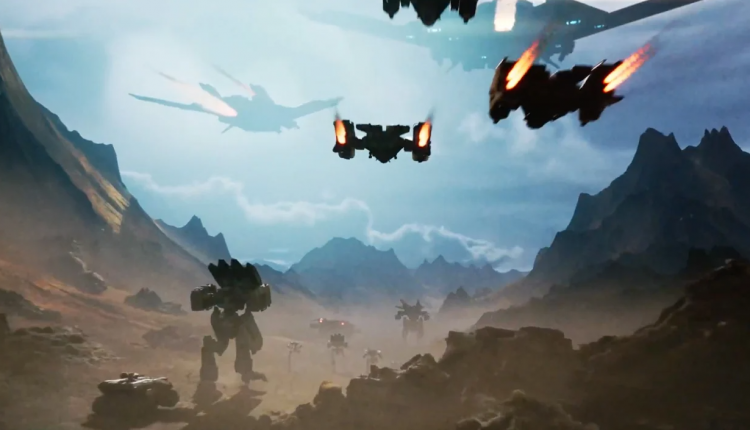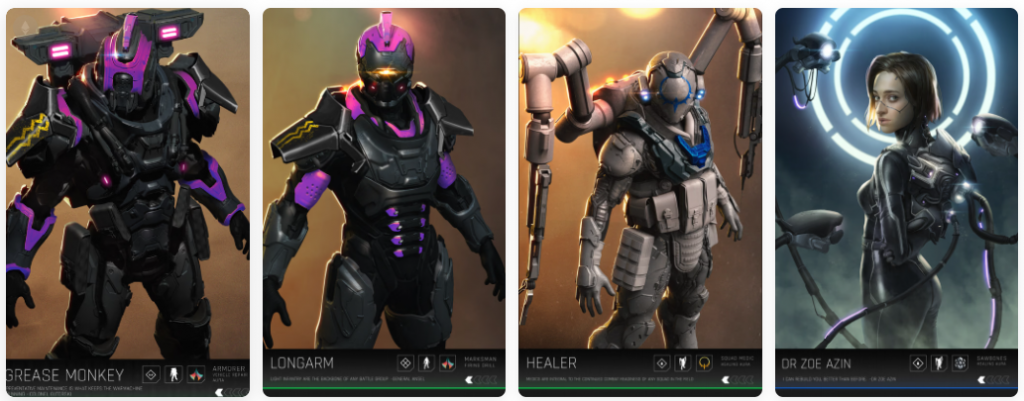Metalcore on why gameplay and community are key for web3

Don’t miss out on any daily news from the blockchain games space: sign up to our Substack, follow us on Twitter and connect with us on Linkedin.
One of the most anticipated blockchain games, MetalCore has been in development at US outfit Studio 369 since 2021. A largescale free-roaming sci-fi shooter, it hopes to combine the all-arm gameplay of games like early Battlefield with the scale of MechWarrior, allowing players to take control of futuristic mechs and air vehicles.
Currently gearing up through a series of playtests – most recently its Alpha 3 test – this is an ideal opportunity to find out more about the game and its progress and so we spoke to business development manager Jerry Singer to find out more.
BlockchainGamer.biz: As an example game developer, what prompted your move into web3?
Jerry Singer: Gaming is in such a unique place, and there have been these moments previously, such as when some of the first mobile games, and then free-to-play games came out, where the industry is in transition periods. There are new pieces of technology and new waves in development that make for impactful changes in the way games are experienced.
We feel like web3 is another shift in the way games are traditionally developed and shipped, and being at the forefront of that was too good of an opportunity to pass up. The concept for MetalCore is one we have had for a very long time, but it didn’t make sense in previous landscapes, and we weren’t going to be able to do it the way we wanted to do it. Web3 is allowing us to build this game out the way we have always wanted to.
How much harder has it been to make a web3 game compared to a web2 game?
The big difference between the two is how early the interaction with the community starts. Traditional games sometimes don’t announce that they’re being worked on. Depending on the type of game it can take years. Part of it is that web3 is new and we want people to know what that means exactly for them in our game.
We are offering NFTs that you purchase and have utility in the game. That required a very heavy push in our art concept phase to make the images of what everything is going to look like. Normally art follows design, so this was a curveball for the designers of the game. We had a general idea and we knew the pillars of the game but the details get iterated on throughout development.
So we had to be clever, if you purchase a mech NFT it’s an awesome image of that mech with a set of weapons. Those weapons are separate in the game and the player can choose different weapon load-outs. This allows for customization progression and doesn’t limit the player to what the image is. The order of operations changes a bit but having so much art created upfront is a great way to start engagement with the community.
What parts of MetalCore will be enhanced by blockchain?
The obvious answer is NFTs here, in-game ownership has never been something that is available to players before, and true ownership can be a really interesting and unique thing in the context of gaming.
In the world of microtransactions, you can buy a skin in a game, but it’s the same skin that a thousand other people can own, with no difference. Now add ownership, updatable metadata, and dynamic elements of ownership.
If you can take a base asset, and customize or create something that is unique and advantageous in the world of MetalCore, you have an asset that you have driven value to, through your achievements in the game. You have been rewarded for your time spent in the game if you choose to sell that asset on the open market, or you can just use it and enjoy the asset you made your own. This is what true ownership looks like when it comes to in-game assets
In terms of MetalCore’s blockchain elements, how will these change as the game progresses from alpha to full release?
At launch, we will be focused on mostly high-end vehicle and infantry NFTs, but over time we have some major features that have a web3 presence, such as Baronies, Territory Wars, and more. Besides new NFT types such as Land and Factories, these will change the way the economy works, so there is a lot to do.

Why did you eventually choose to deploy on Immutable?
Immutable does a lot of things exceptionally well. First, and the obvious answer, is that it’s a blockchain built for gaming. It is scalable, fast, and ultimately, cheap. Paying even a few cents per transaction is something that will be a friction point for gamers making the leap to blockchain gaming, and IMX recognizes that.
Second, Passport is something that is solving a ton of friction points. From single sign-on, to on and off ramps, the gaming experience will need to feel as native as possible if we want this niche industry to grow. Immutable has recognized that and is several steps ahead of the competition in creating the infrastructure and tools for a frictionless player experience.
Third, and this is extremely important, Immutable has built up an impressive roster of talent inside the company. Immutable is not a team that threw some things at the wall to see what sticks. Everyone in the company is a subject matter expert who is incredibly knowledgeable and experienced within their vertical, and that can’t be understated when you are building out a nascent industry.
What challenges have you been facing in regards to the blockchain tech side of things?
With Immutable’s help, we aren’t too worried about that. Just understanding the basic necessities of atomic transactions and limitations on how often we can reward web3 stuff to players, with Immutable’s guidance, and the rest of the technical hurdles are solved for us.
MetalCore is designed for large scale multiplayer action, however the web3 games industry is still quite niche. How are you planning to onboard more players, in particular web2 players?
I think our blueprint is out there — go where the gamers are. A lot of our current base and community wasn’t built around the web3 side of things. A lot of our most passionate players came from our demos at Pax and TwitchCon, and we are expecting an influx now after Comic Con.
We have a few more tricks up our sleeve for the next few months, but what you can expect is a traditional gaming go to market strategy.
What can we expect from MetalCore in the short/long term?
Short term: fun 24/7 multiplayer action game that players can play for hours a day and have fun with.

Long term: a deep metagame that gives players a ton of continued retention and stuff to do beyond progressing their accounts.
What are your thoughts on the future of blockchain gaming?
Cautiously optimistic. There is a lot of things to be optimistic about and to celebrate, but we haven’t nearly gotten there as an industry. We have now demo’d MetalCore at three of the biggest traditional trade shows (PAX west, TwitchCon, and now San Diego Comic Con). Our reception at each was great, and when players were explained the benefits of blockchain and how they can enhance the user experience, they were really happy! As a studio, our belief is leading with gameplay, and letting gameplay be what speaks for your game. This has always been well received with gamers.
As an industry though, there are a lot of games that are still focusing on the financial aspects of blockchain and gaming. Money and earning opportunities cannot be the main driver to a game. It’s just not sustainable. Games need to be fun and immersive, and we hope that, as one of the first major titles going to market, we can show the next generation of games a blueprint.
Put an immersive gameplay experience first, let the community around you have a say in the direction of the game and the story, and leverage the technology to its fullest extent so that you can enhance the end user experience.
Find out more at the MetalCore website.
